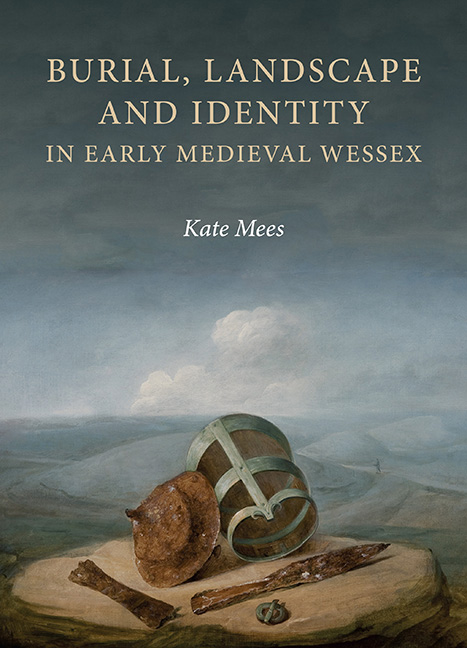Book contents
- Frontmatter
- Dedication
- Contents
- List of Illustrations
- Acknowledgements
- List of Abbreviations
- Note on Period Terminology and Other Definitions
- Introduction: Perspectives, Approaches and Context
- 1 Monument Reuse and the Inherited Landscape
- 2 Topography and Ritual Life
- 3 ‘Britons and Saxons’?
- 4 Land Use, Territoriality and Social Change
- 5 The Church and the Funerary Landscape
- Conclusions
- Appendix: Gazetteer of burial sites in the study area, c. AD 450–850
- Bibliography
- Index
- Anglo-Saxon Studies
5 - The Church and the Funerary Landscape
Published online by Cambridge University Press: 24 October 2019
- Frontmatter
- Dedication
- Contents
- List of Illustrations
- Acknowledgements
- List of Abbreviations
- Note on Period Terminology and Other Definitions
- Introduction: Perspectives, Approaches and Context
- 1 Monument Reuse and the Inherited Landscape
- 2 Topography and Ritual Life
- 3 ‘Britons and Saxons’?
- 4 Land Use, Territoriality and Social Change
- 5 The Church and the Funerary Landscape
- Conclusions
- Appendix: Gazetteer of burial sites in the study area, c. AD 450–850
- Bibliography
- Index
- Anglo-Saxon Studies
Summary
In the words of Alan Everitt, ‘the church has had a greater impact on the landscape and economy … than any other human agency.’ Granted, Everitt was referring specifically in this case to Kent, which was of course subject to a set of circumstances that were in many ways distinct from those experienced by other areas of southern England. Still, the transformations wrought by the ascendancy of Christianity can be as keenly recognised in Wessex as elsewhere. Any radical change to a dominant religious or political order can provoke or expedite tangible changes in how the landscape is structured and exploited – within, of course, the constraints of the physical environment: geology, soils, topography and climate. What was uniquely transformative about the influence of the Roman Church in the Middle Anglo-Saxon period was its capacity to allow elites to consolidate their power – owing in part to its innately hierarchical structure – and thus to effect change in the landscape. The Church as an institution was responsible for profound alterations in the nature of landholding. The stability afforded by perpetual ownership provided an incentive for royal powers to invest in the land and to improve productivity. Furthermore, the generation of agricultural surpluses through increasingly specialised means of production was essential for supporting the new array of ecclesiastical communities and monastic houses, which were occupied on a permanent basis, in contrast to the predominantly peripatetic royal entourages. Of course, it would be unwise to exaggerate the role of the Church as a driver of landscape change, and we must be careful not to overplay the top-down influence of elite engagement with this ascendant ideology. The fact that the vast majority of the surviving written sources for the Middle Anglo-Saxon period relate to the lands held by major minsters creates a degree of bias, in that ecclesiastical land organisation is unavoidably presented as typical. It is nevertheless likely that across the board, in both secular and ecclesiastical contexts, royal authorities structured their lands in a similar fashion, with estate centres surrounded by a network of specialised dependent settlements.
This chapter explores the impact of the conversion on burial rites and mortuary topography in early medieval Wessex. Can we, for example, identify cemeteries associated with church foundations from an early date, or does burial location continue to be influenced by other factors?
- Type
- Chapter
- Information
- Burial, Landscape and Identity in Early Medieval Wessex , pp. 179 - 199Publisher: Boydell & BrewerPrint publication year: 2019



